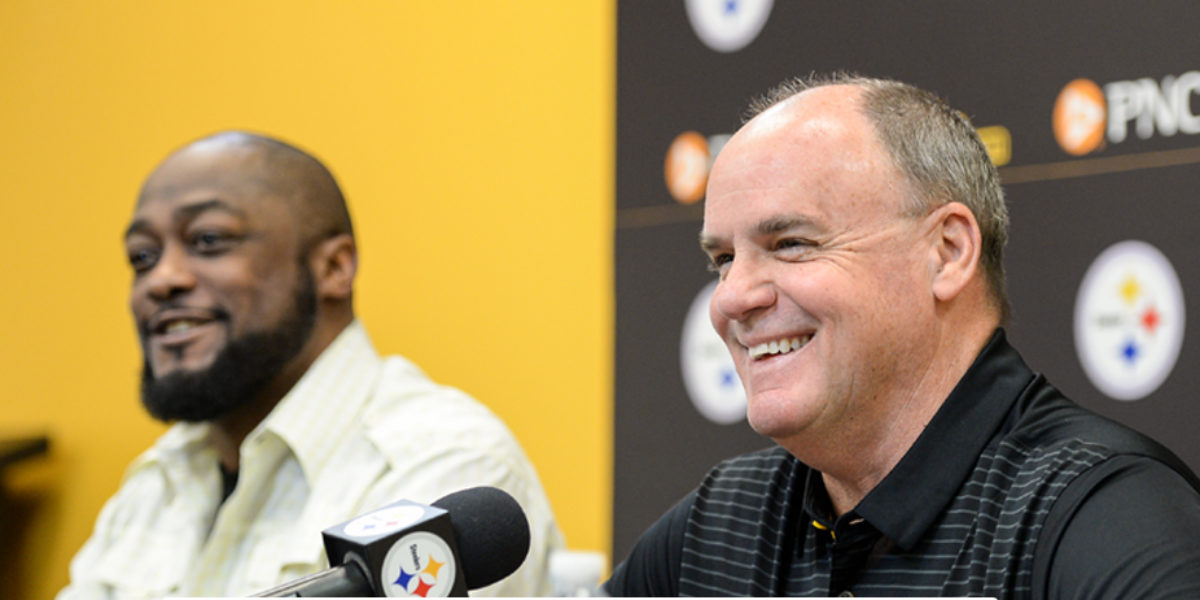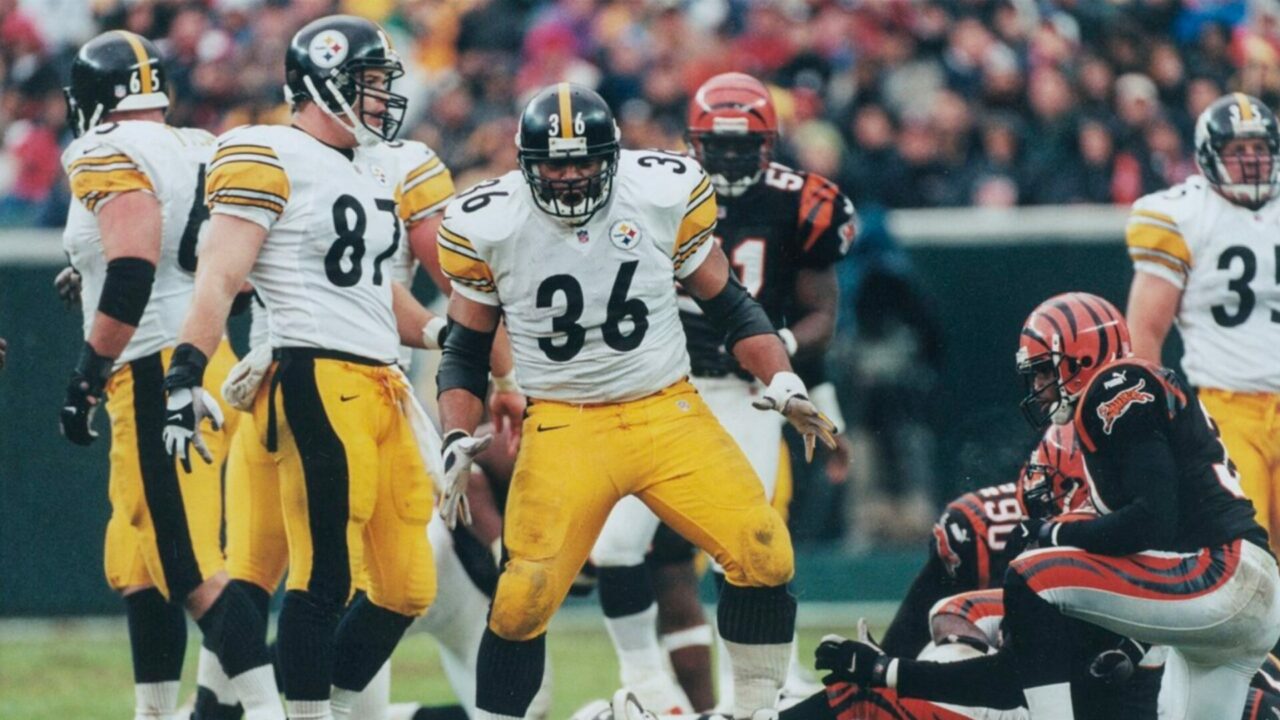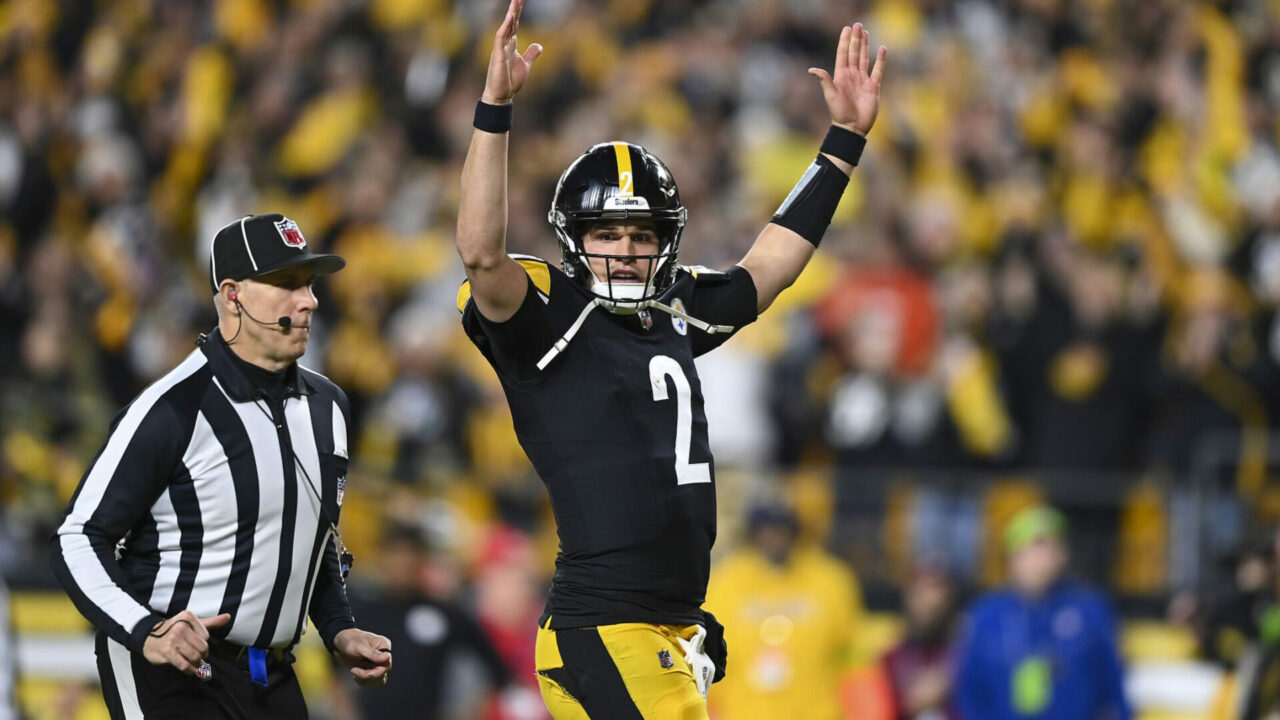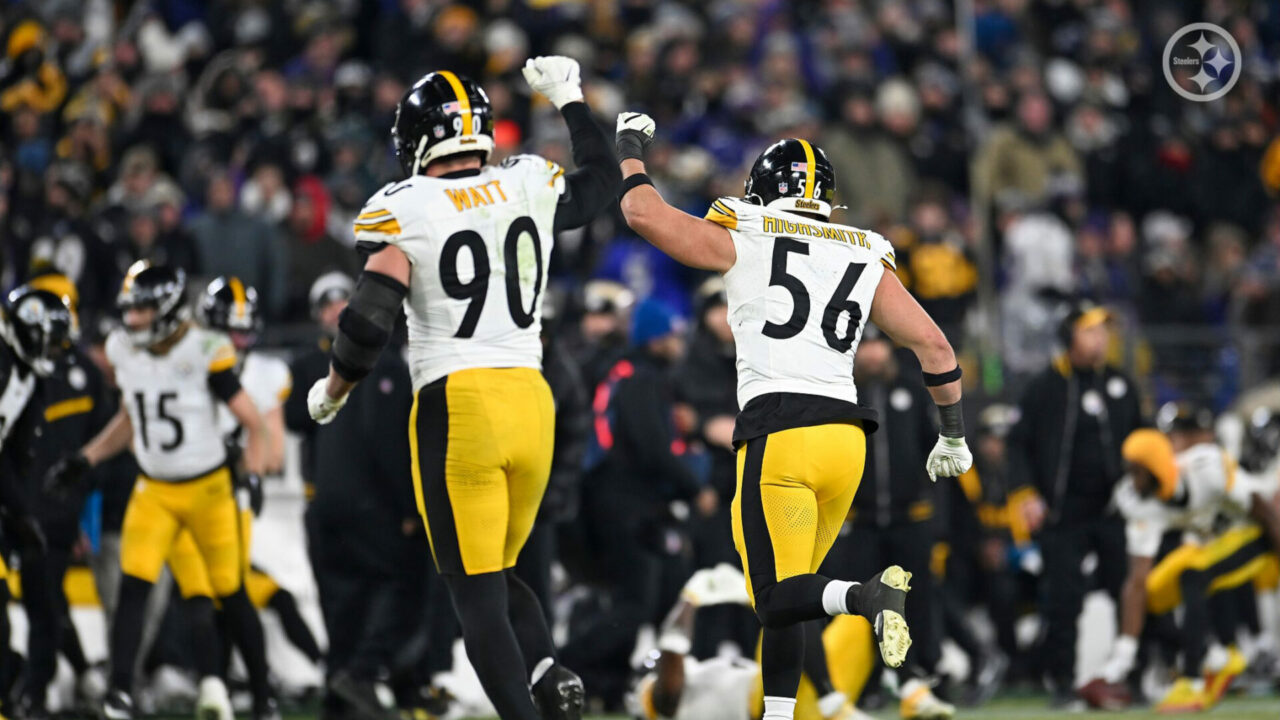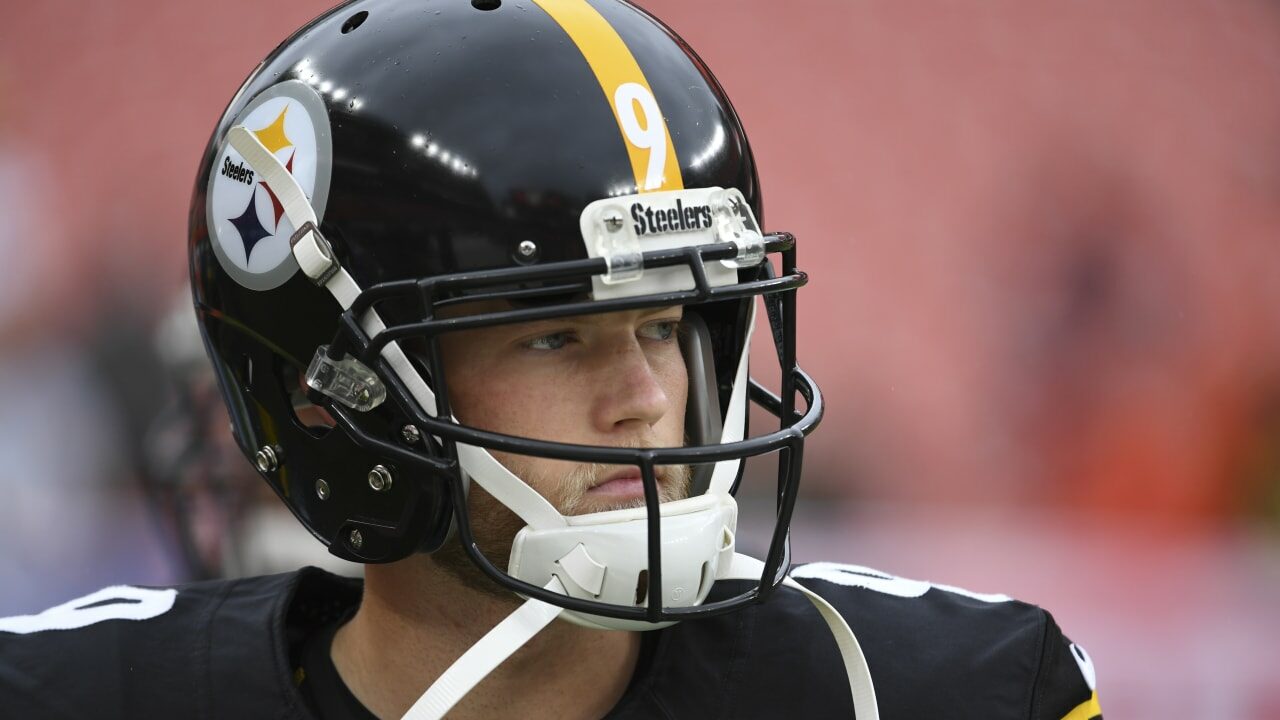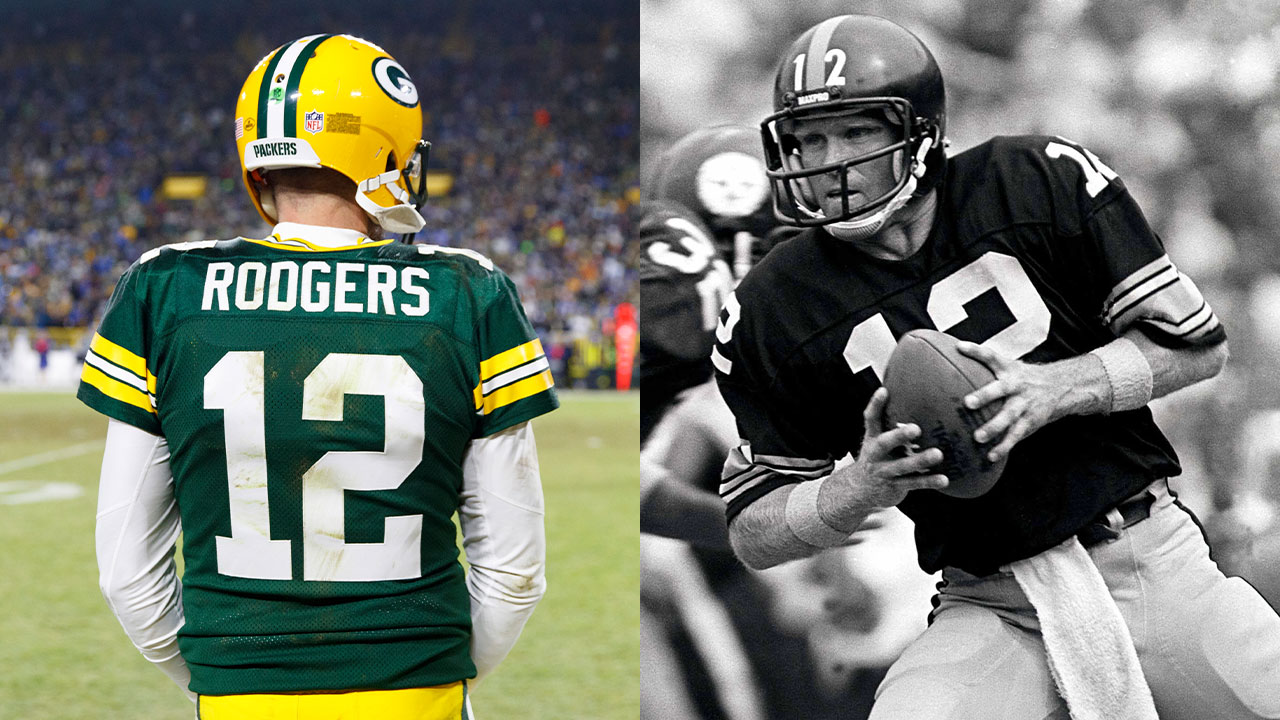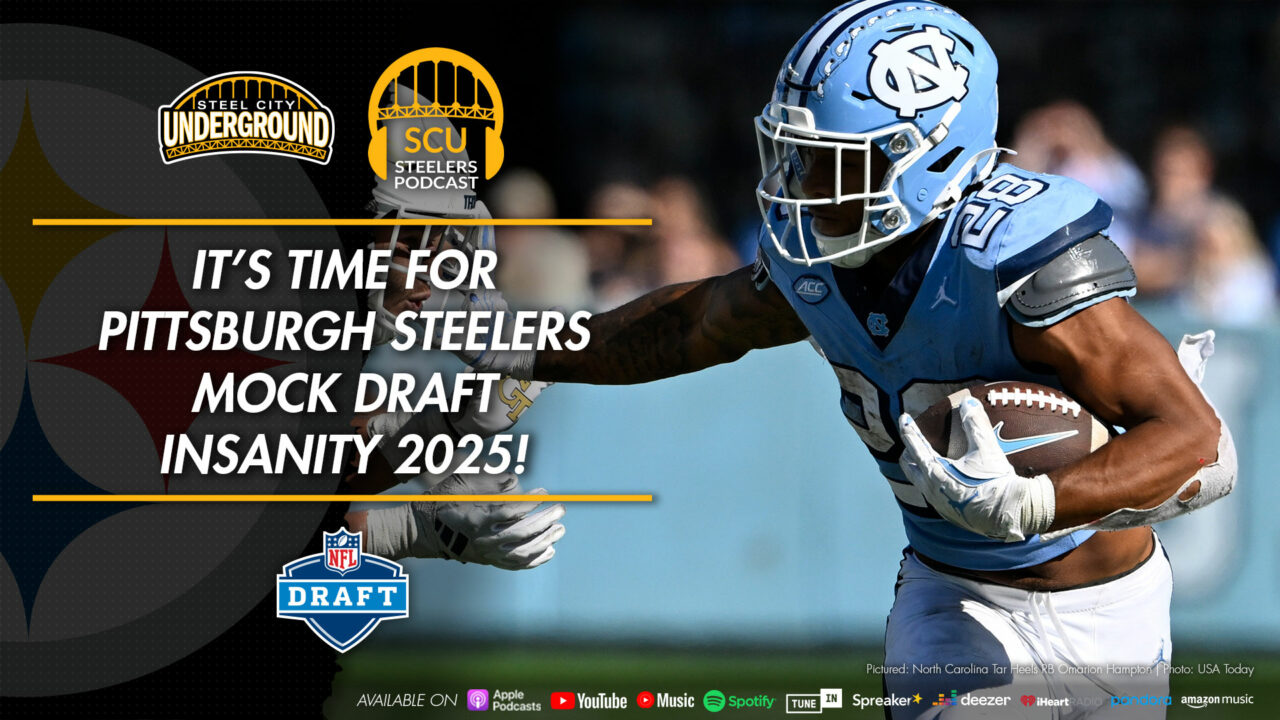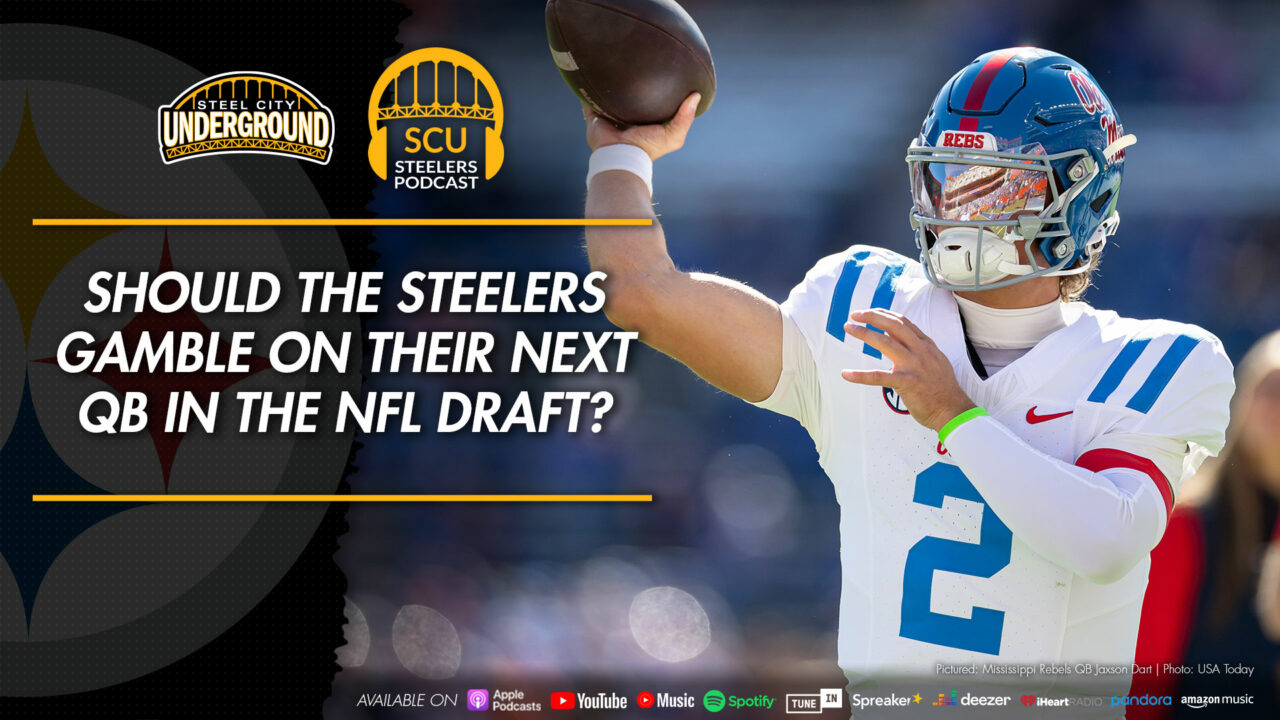Kevin Colbert and Coach Tomlin Pre-Draft Press Conference
Pittsburgh Steelers general manager Kevin Colbert and head coach Mike Tomlin helds a special press pre-draft conference on Monday. Here is a glimpse of what stood out from their comments.
Kevin Colbert:
Good afternoon everybody. Welcome. Always an exciting time as we prepare for the draft. Just a couple of items we wanted to talk about before we got into the draft prep. As you were made aware earlier this mooring, we exercised the fifth-year option on Bud Dupree. We are excited about where Bud can be in these next two years and we had no hesitation in making that move when we did it. I am sure there will be questions about Le’Veon [Bell] and his contract situation and really there is no update to provide as we said previously at the owner’s meetings and other chances that we’ve had to talk, the combine and so forth.
Really, we are in this draft preparation in full detail and that’s got our full attention. We usually do not address these types of situations until after the draft and we re-evaluate our salary cap situation and anything we want to do moving forward. With that, we are still tying up a few loose ends in the draft preparation as we always are during this press conference. I want to thank Coach Tomlin and his staff, of course, my scouts for putting together the draft information. It’s a long task and we feel we put in a good amount of work and hopefully we can bring it to fruition with making some good picks.
Really when I look at the numbers, we’ve talked about the numbers in previous arrangements. The numbers really came out about the same when we got through the more detailed evaluations and pro days and interviews and so forth. When I look at this thing collectively, rather than going through positionally, we probably got about 90 guys that in all honesty, at some time could probably become starters for us. Now they can be selected at various levels throughout this draft. Some will be first rounders, some may be seventh rounders, but it’s a deep cumulative group, I’ll say it that way. Even with the depth kind of players, the kids that might be backs-ups, or practice squad guys, there’s probably another 90. So, collectively we are probably looking at 180 guys. We usually pick from about 125 of those guys so I am excited about it.
I know there’s seven guys available that can help this team be a better team in 2018. As you know, we have picks [in rounds] one, two, and three. We have two five’s and two seventh’s. Our pro scouts will be in contact with the teams around the league as we do every year to see who may be interested in trading up or trading down. Again, we are open to go either way.
Our visits, probably at the Senior Bowl we interviewed probably 60 people there at the combine. We did our 60. Ten of which we may have already touched based with at Senior Bowl. I am sure somebody is going to ask well you only had 23 in to visit and that’s true but we went into this spring with really the focus of, let’s make sure we don’t just bring in kids to hit 30. We wanted to make sure we were diligent about selecting those because when you do those interviews it is usually during your meetings and it takes away from your meetings. So, we wanted to make sure the ones that we did were actually the most important. The kids at Pitt, and West Virginia, and kids from local residences don’t count against that number. Then at the pro days, between a coach and myself, or together, we probably interviewed about 20 kids at least the night before their pro day’s and got to meet them and spend more time with them. In some cases, met some family members so that part is always very important for where we are when we are trying to make these decisions.
Mike Tomlin:
I echo Kevin’s excitement. It’s been a process for us. He and I have been working together for a number of years now. It does not make the process an easy one but it does make it an easier one. We’ve had some good experiences traveling and talking about the draft prospects and gathering information. We are excited about this weekend. We intend to select guys that are going to make us a better football team in 2018.
Picking so low in the first round, is it best athlete available or is it a need pick?
KC: It’s always going to be relative, best athlete availability, versus the so-called need. Again, we don’t like to use the word need, we use the word want. We recognize it in any given situation. Any given year there will be players that will have a better chance contributing than others and if those players are equally graded, or graded closely, sure you’ll gravitate towards those. Again, if you reach to take a player that might play quicker, even though he is not as good of quality as the one you are passing up you’ll make a huge mistake that you will someday regret.
MT: We have the type of continuity that allows us to have that type of perspective. It’s just the variable that you weigh. Needs versus availability and we’re not afraid of those discussions. Matter of fact, we had quite a bit over the years and I think we are comfortable in term of weighing those variables.
If it is need, how close does it have to be?
MT: That’s why I said we were comfortable weighing those variables because I knew where you were going.
KC: It’s always a relative range. Again, when you pass up a highly rated player to take a player rated lower. significantly lower, you’ll end up regretting it. I’ve seen it happen. I’ve been a part of it in the past. It happens, we’re all guilty of focusing on one year. 2018 is what we are focused on but we are never going to lose sight of 2019 and beyond because when you do that you will end up in a rut that you may not get out of. Fortunately, we’ve only been in one of those ruts when we had that losing season. Fortunately, we have a franchise quarterback out of that. The success we’ve been able to have was relative to that offseason that we had but we want to be able to compete for championships every year. 2018 most important but we’ll never lose focus so ‘19 and beyond in trying to be champions next year.
In the past few years your top picks have played right away, is that any more important now with how the NFL is, to be able to have your own guys come in and play?
KC: That’s really relative to the team that you have. We never predict when a kid can play. Until we get him in here and see him working with our team in the spring and in training camp. Sometimes they get opportunities quicker than others. Troy Polamalu is probably a Hall of Fame safety that didn’t play as a rookie. Ben [Roethlisberger] played because of Tommy Maddox’s injury. We certainly didn’t plan on him playing as early as he did so it varies by player. If they play, it’s really more relative to the opportunity that’s there and how ready they prepare themselves for the opportunity.
Do you see it happening around the league?
KC: I can’t say that because I haven’t really studied it. I don’t think it’s as a significant piece of information because it varies by year. I don’t think there’s any continuity or consistency with it. I don’t see it as a trend, especially with the success teams.
You said that 90 guys in the draft could start for you, there are usually 125 that you draft from, how do those numbers break out?
KC: Well I’ve never really collectively just did it. Just started to look at it and say, we usually pick from a group of 125, every year is different based on where we are picking, and how many we get. Like this year we don’t have a fourth round [pick]. We get two five’s. there’s a little separation in there and the two seven’s without a six. So, when we are taking those guys available and when and if they become starters, it might be year one as Gerry eluded to, or it might be year three or four in the succeeding years. You just know there are good players available. I know that. Coach knows that. We both believe that and when and how quickly they help us we don’t know. It’s something that varies year to year, injury to injury, situation to situation.
So, you’re not saying this a usual deep draft?
KC: No. I would say this, I wouldn’t say there are a lot of marquee players where everybody can easily identify those kids as future Hall of Famers. But I will say this, there are probably more of that solid starter capable player than maybe I’ve seen in recent years.
Are you guys satisfied with [Leighton] Vander Esch medical?
KC: We don’t talk about any individual player.
Re: How do you evaluate the inside linebacker class as a whole?
KC: It’s a good class. The inside linebackers are changing as the college game has changed. There are probably more kids available in this draft, not just unique to the inside linebacker position, but all defensive and even some of the offensive positions where they may do one thing really well. Maybe they rush the passer better than they cover. Maybe they’re better zone droppers than they are man defenders. Very few of them are really what you’d say four-down type players. Some of them are two-down, some of them are three-, and some of them are one-down players. They might only be special teamers, but they’ll be on your team because you have those kinds of kids making up your whole roster. So, I think the inside linebacker position has changed and there’s probably more specialist type guys than unique top players.
MT: I’ll add to that. I think that you could say across the board it’s been a fun process to look at how the draft has evolved. I think there’s more specialization within the positions. I think there are different types of inside linebackers and they have different types of tight ends. They have different types of corners. There are corners who focus specifically on inside corner play. There are corners who focus specifically on outside corner play. I really just think it really struck us this year in draft prep, the level of specialization in today’s college game, and it’s exciting from our prospective.
Re: What specialized skills are you looking for in inside linebackers?
MT: I think what we talked about – and I think it’s the appropriate discussion – is we’re going to take the best player whether it’s inside linebacker or corner or safety or offensive lineman. We have enough flexibility in terms of what we do to lean on the skillsets of the player than we acquire. So, there are different linebackers in this discussion that have different skillsets – some of them are cover men, some of them are blitzers, some of them are zone droppers. Whoever we end up with whether it’s linebacker or offensive lineman or otherwise, we’ve got enough flexibility in terms of what we do to lean on the skillsets in which they excel in.
Is this year’s inside linebacker class at all similar to what you were looking at with the class of corners in 2016 where there are a lot of guys high in the first round?
KC: I think it’s really modern day college football and what’s available to us. It’s a changed game, and you see it leaking into our level as well. We’ve got to be good against the run, we’ve got to get to third down and we’ve got to get off the field on third down. As an offense, we’ve got to create opportunities where we don’t have third downs, we have a lot of first downs. So, I think football has changed. It’s more horizontal than it is vertical. There are a lot of different types of athletes. When we drafted Ryan Shazier a few years back we talked about that. The game was changing and Ryan was going to be a specific player to try and meet the challenges of modern day football, and he certainly did that for us. But I think beyond those years, it’s really expanded more where it’s become a real four-down challenge.
If that type of specialization continues, do you see them forcing rosters to expand at all?
MT: No, I just think areas of expertise geared toward a given situation – it doesn’t necessarily mean an expansion of rosters. Even though there may be a corner that’s drafted that specializes in interior corner play, he still has outside corner responsibilities. He still is a kick and punt coverage guy, etc. We’re just talking about the things that guys focus on to add value to their portfolio. You see a lot more specialization in that area.
With that specialization, does it put stress on the staffs that you have to get the run guy on for the run play and the pass guy on for the pass play and so forth?
MT: That’s not a negative conversation from my perspective. That’s an awesome conversation. I don’t view that as a negative, no.
But is it becoming more about that?
MT: Our game has been about that. I just see the college game becoming more about that, and so I don’t know if it produces any more discussions on our side. It’s just refreshing to see a nickel corner come to you in the draft more pro-ready, more trained, more specialized in terms of the things he needs to do. In the same way, it’s more exciting to see the situational pass rusher come to you with more defined skillsets or the interior slot receiver. I just think that all of those guys globally come to you with more specialized talents, and it’s good because I think that is our game.
Do you expect a lot of movement in the first round because of all of the quarterbacks expected to go early?
KC: Possibly, it depends on what teams are looking for them and what they want to pay to get up to get whatever position it is. So, I think it’s all relative to the group and how much people want to pay. There are people who’ve traded up already, and there are probably others who want to get out. Those are the types of things that really, they evolve as the draft unfolds because of a certain player getting picked, a team that was trading up no longer is interested and vice versa.
Has the fifth-year option changed the value of first round picks at all?
KC: I haven’t thought that deeply about it quite honestly. I just look at it and say, OK we’re going to exercise the option because we think he has the chance to be a good player in four and five, but as far as the trades, I haven’t thought that deeply about it quite honestly.
It’s never entered your thinking in terms of trading out of the first round?
KC: No, absolutely not. We’ve traded up in the past and we’ve traded down. We’re open to both. It really depends. Once this thing starts, one pick and one trade can change everything. Then it’s just adjust and be ready. We’ll have 28 guys. We’ll know how we’ll pick them and we’ll know at what point we might want to go up and at what point we’re saying let’s just go down because we can still get player number 28 at the 32nd pick. Those types of things are what you always weigh and measure throughout the whole process.
Does not having a fourth-round pick hurt that if you want to move up?
KC: Yeah, you have less to trade, sure. But now we have two fives, so maybe somehow that five factors into it, and if you only had one maybe you wouldn’t be able to do that. It’s really all relative to what’s available and how you want to take them.
Re: Is quarterback off the table in the first round?
KC: We haven’t eliminated any position this year. Look, Ben [Roethlisberger] is a Hall of Fame quarterback. We’re very lucky to have him. He has stated his intention to play for at least a few more years, and that’s awesome. But as I said when we opened this, our job is not only to win a championship in ’18, it’s to secure this franchise’s ability to do it in the future, and you have to have a great player at the quarterback position, in our eyes, to have the best chance to win a championship. Fortunately, we have one who’s still a very highly productive, highly effective quarterback, and part of our job is to surround him with the best talent as well. So, we have to weigh that in, and we will weigh that in throughout, but we haven’t eliminated any positions in this draft whatsoever.
You’ve had some personnel changes on defense. Can you talk a little bit about what you had last year versus what you have now?
MT: We have no idea because we haven’t done anything yet. We’re just starting the conditioning element of it. We’ll get to know these guys as we take the field and start teaching this spring in the OTAs and so forth. Right now, we’re just in phase one, the conditioning phase of the offseason program, so we haven’t legitimately started talking football and things of that nature. We’ll have a better assessment of what we have from a personnel standpoint, what they’re able to provide us, once we start the work.
Do you have any expectations or hopes for Morgan Burnett?
MT: I’ve seen him be a very versatile contributor on Green Bay tape, and that’s exciting. But I’m not going to assume that. He’s played both safety positions. He’s played some sub-package linebacker. I would assume that he’s going to be available to us in those ways, but I’ll let the process take care of that.
How are you evaluating how you want to get from the edge at the passer? How are you looking at defensive ends versus outside linebackers in terms of the evolution of your defense and where it is in that regard?
MT: Nothing has changed for us from that perspective. There’s not anything new going into this 2018 draft relative to the identification of outside linebackers who are capable of being edge rushers in passing situations. So, there’s nothing new on the docket from our perspective as we prepare. What is interesting is to see the specialization of the edge rushers in college football – the outside linebackers who exclusively rush the passer in the ways that NFL outside linebackers do. There’s more evidence of that. That’s a continuation of the conversation we were having earlier about more specialization. All of that is positive and exciting from our perspective.
Do you know who is going to line up at free safety for the first team on the first OTA practice?
MT: I imagine it’s going to be [Morgan] Burnett, but we haven’t decided yet. He’s played a lot of ball. He’s started more than most, but again, it’s not about how we start. Everybody will be given an opportunity to show where they’re capable of contributing. Maybe Morgan ends up at strong safety and Sean Davis ends up at free. We’re open to all of those things, not only in terms of the men that we’ve mentioned, but the men that we’re going to include this weekend. So, we’re going to get them all on the grass. We’re going to teach them all. We’re going to have a very inclusive mentality in terms of the instruction, and we’ll let those guys sort themselves out in terms of what they can consistently deliver that’s above the line.
What’s your reaction to picking up Bud Dupree’s option? Where do you think he’s at in his career?
MT: We’re excited about what Bud [Dupree] is going to do for us here in ’18 and ’19 and comfortable that he’s going to meet the challenge.
Transcript provided by the Pittsburgh Steelers
